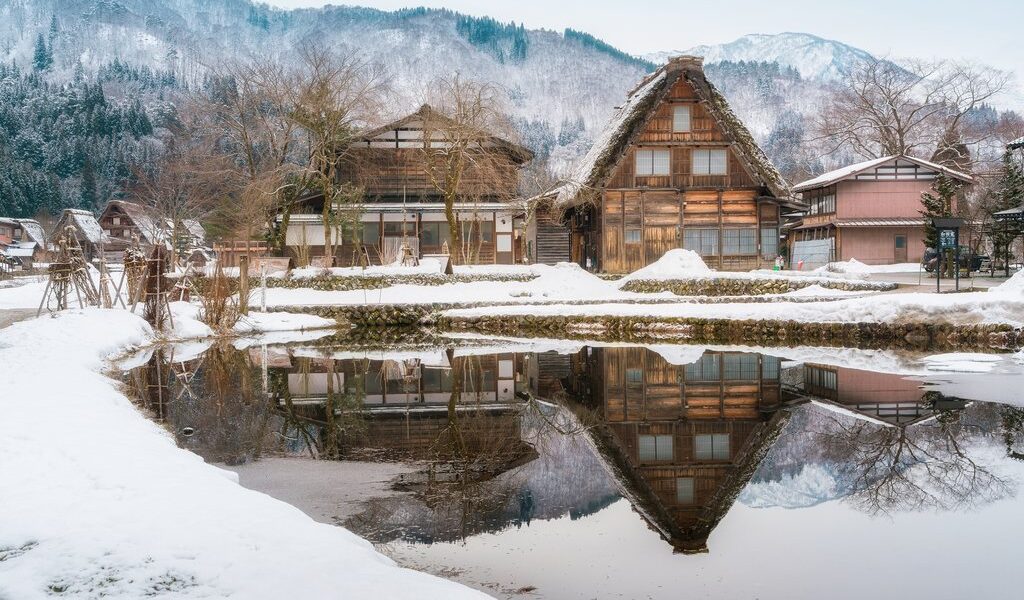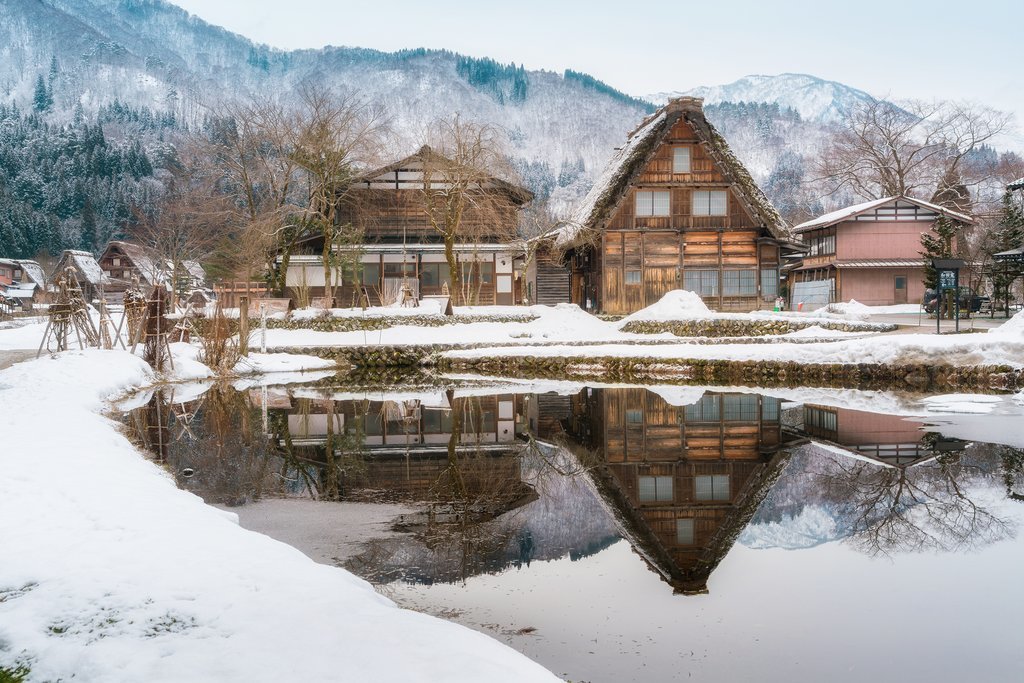
Japan is famous for its Spring cherry blossoms and its changing colors in Autumn, but there are beautiful places to see in every season. Japan stretches from subtropical southern extremes to the northern reaches just across from Siberia, so with a little planning, you can find the right place to explore any time of year.
Essential Facts for Planning Your Japanese Adventure
- The period from April to May marks the peak travel season in Japan, coinciding with the breathtaking spring cherry blossom displays.
- To avoid the bustling crowds of spring, consider exploring various locations in the early morning hours for a more serene experience.
- If your travel plans are set for spring, it’s highly recommended to secure your reservations well in advance, ideally 6-12 months ahead of your trip.
- Japan is rapidly gaining popularity as a premier destination for winter sports enthusiasts, offering a wide range of activities and stunning snowy landscapes.
- Autumn presents an idyllic opportunity to visit Japan, characterized by long, cool days and a mesmerizing display of vibrant foliage.
- To escape the summer heat, consider venturing into the mountainous regions or heading to northern Japan, where you can find respite from the warmer temperatures.
A Comprehensive Overview of Japan’s Seasonal Allure
Japan experiences four distinct seasons: Winter, Spring, Summer, and Autumn. While theoretically, each season spans three months, the perception is that winter and summer tend to linger longer, while spring and autumn feel fleetingly marvelous. Winter encompasses the months from December to March, followed by spring in April and May. Summer extends from June to early September, and autumn graces the country from mid-September to November.
Spring and Autumn stand out as the seasons offering the most pleasant temperatures throughout the country, especially on the main island of Honshu, where a significant portion of travelers choose to stay while visiting prominent cities such as Tokyo, Osaka, and Kyoto. It’s worth noting that many popular tourist destinations can experience considerable crowding during these seasons. However, you can mitigate this by opting to visit places in the early morning or late afternoon, allowing for a more tranquil exploration.
Japan is broadly divided into four general regions, each characterized by distinct climates that contribute to the country’s diverse appeal:
- Hokkaido / Northern Honshu
- Central Honshu
- Western Honshu / Shikoku / Kyushu
- Okinawa
Winter in Japan (December to March): A Season of Snow and Festivities
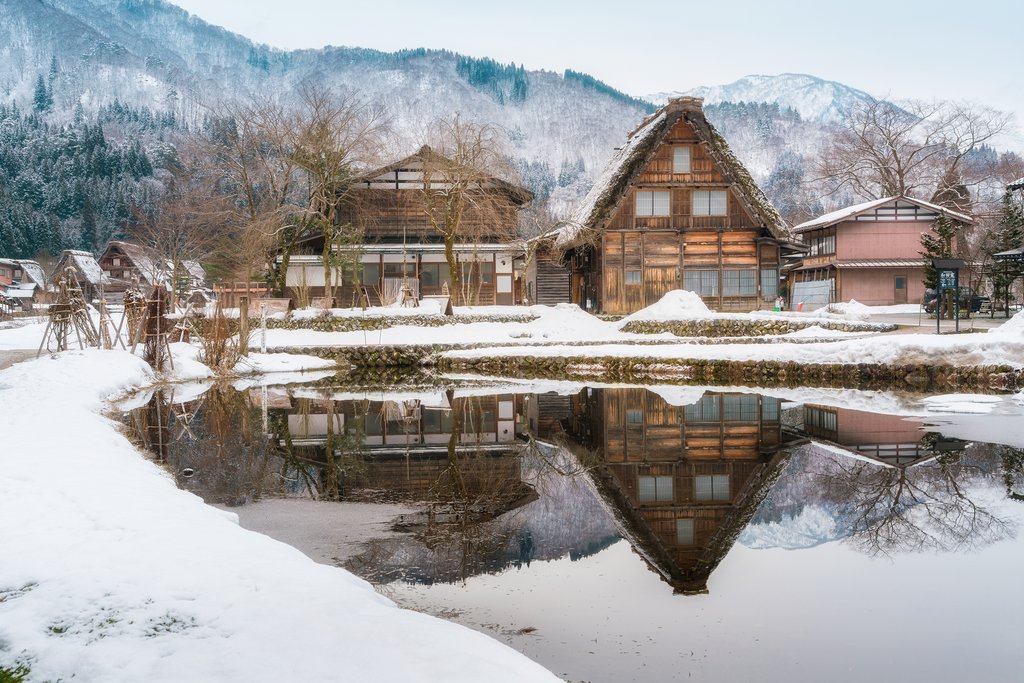
Traditional Gassho-zukuri style houses in Shirakawa-go, showcasing the unique architectural style adapted for heavy snowfall.
Snowfall is a common occurrence in the northern half of Japan during the months of December to March, transforming the landscape into a winter wonderland. In recent years, tourism has experienced a surge as more and more people discover the incredible opportunities for skiing, the vibrant winter festivals, and the comparatively fewer crowds during these months.
Winter in the southern regions of Japan tends to be milder, with temperatures gradually increasing as you move further south. Okinawa enjoys the warmest climate during this season.
Hokkaido / Northern Honshu. Hokkaido stands out as a premier winter destination, renowned for Niseko’s exceptional winter sports facilities and the numerous snow and ice festivals, including the celebrated Sapporo Winter Festival, typically held in February. Expect average temperatures around 25°F (-4°C), making it ideal for winter activities.
Central Honshu. Winters in Central Honshu are generally chilly, but without heavy snowfall, ensuring that all traveler destinations remain accessible and open for exploration. Average temperatures in Tokyo and Kyoto hover around 41°F (5°C).
Western Honshu / Shikoku / Kyushu. The mild weather in Western Honshu, including Shikoku and Kyushu, makes Kyushu an appealing option during the winter months. You can enjoy accessible hikes and indulge in the numerous onsen (hot springs) that dot the landscape. Average temperatures in Fukuoka are around 49°F (9°C).
Okinawa. While winter may not be the optimal time for watersports in Okinawa, it provides an excellent opportunity for activities such as fishing, hiking, and scenic drives around the islands. Average temperatures in Naha during January are around 63°F (17°C).
Connect with a local specialist who can assist you in organizing every aspect of your trip, ensuring a seamless and unforgettable experience.
Spring in Japan (April and May): A Season of Cherry Blossom Magic
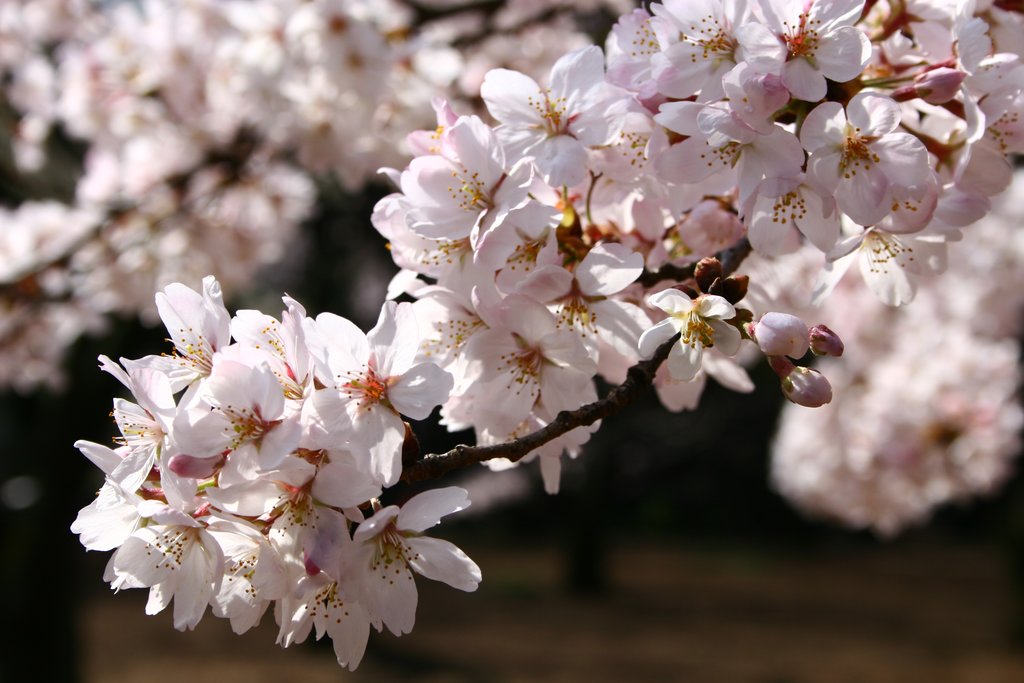
Sakura cherry blossoms in Shinjuku Gyoen National Garden, Tokyo, painting the landscape in delicate shades of pink (© Yuri Awanohara).
Spring is undeniably the most enchanting season in Japan, as the cherry blossoms (sakura) burst into bloom, creating a spectacle of beauty that sweeps across the country. The blossoming begins in the southern region of Kyushu and gradually progresses northward, culminating in early May in Hokkaido. It’s important to note that weather conditions in spring can be quite variable, and if you’re fortunate, you might even witness the magical sight of snow falling on cherry blossoms, a truly unforgettable experience.
The pleasant weather and the mesmerizing beauty of the cherry blossoms contribute to making this the most crowded time to visit Japan. During this season, it is absolutely essential to book your accommodation, transportation, and even meals well in advance, as many hotels, trains, buses, and restaurants tend to be fully booked due to the high demand. If your heart is set on experiencing the cherry blossoms without being overwhelmed by massive crowds, consider visiting popular sights during off-peak hours or venturing slightly off the beaten path. Virtually every location on the four main islands of Japan boasts amazing cherry blossom viewing spots, offering a more intimate and serene experience.
If you have your heart set on seeing the cherry blossoms but don’t want to be in a massive crowd, you can choose to visit sights during off-peak hours, or go a bit off the beaten path; virtually everywhere on the four main islands of Japan have amazing cherry blossom viewing spots.
Hokkaido / Northern Honshu. Snowfall often persists in Hokkaido until April or early May, with average temperatures in Sapporo around 52°F (11°C).
Central Honshu. Central Honshu experiences peak travel season with significant crowds. Daytime temperatures in Tokyo and Kyoto average around 55°F (13°C).
Western Honshu / Shikoku / Kyushu. Kyushu is the first region to welcome the cherry blossoms each season, typically in mid-March. Average temperatures in Fukuoka are around 60°F (15°C).
Okinawa. Spring is an excellent time to visit Okinawa, although some may prefer wearing a wetsuit for ocean swimming. Average temperatures in Naha during April are around 70°F (21°C).
Summer in Japan (June to early September): Escape to Cooler Climates
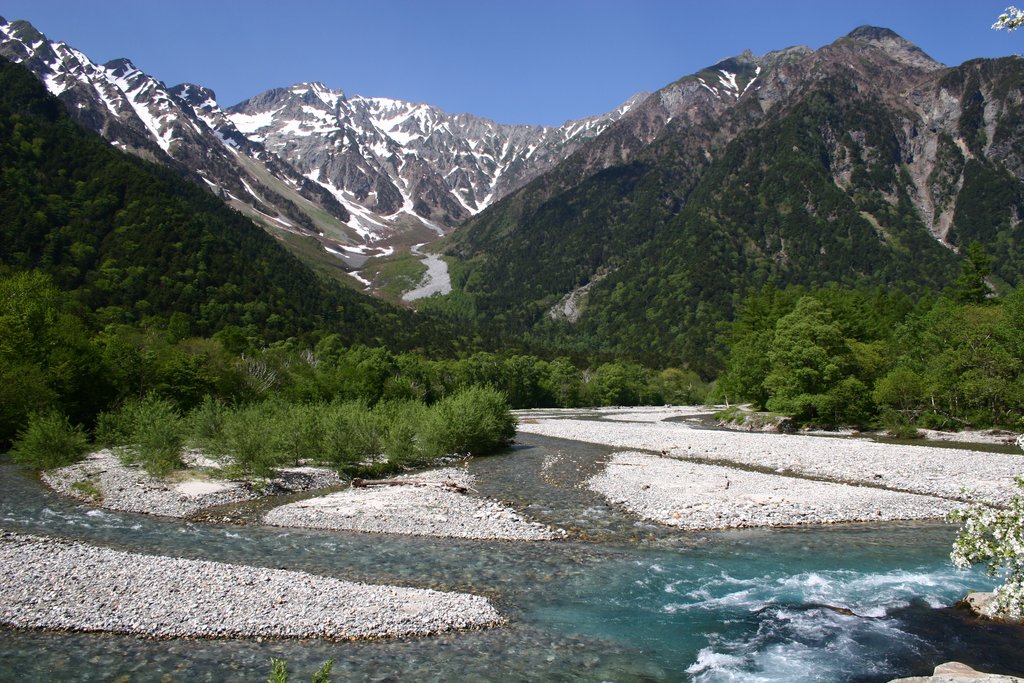
Hiking in the Japan Alps, in places like Kamikochi, Nagano, is a fantastic way to escape the lowland heat and enjoy the beauty of nature (© Yuri Awanohara).
The rainy season typically begins around mid-June and can vary in intensity, ranging from occasional showers to multiple consecutive days of rain. However, the rain usually doesn’t persist throughout the entire day. A stroll in light rain through a vibrant green Japanese garden, adorned with lush moss and ferns, can be a serene and memorable experience. As the season progresses, the weather becomes hot, making early mornings and evenings the most suitable times for sightseeing.
Hokkaido / Northern Honshu. Many domestic travelers choose to head north to Hokkaido during the summer months to escape the monsoon rains and enjoy cooler temperatures, which average around 68°F (20°C).
Central Honshu. Central Honshu experiences hot and humid conditions, with significant precipitation. It’s best to plan outdoor sightseeing activities for the mornings and evenings to avoid the heat of the day. Daytime temperatures in Tokyo and Kyoto average around 83°F (29°C).
Western Honshu / Shikoku / Kyushu. A significant portion of Kyushu can become uncomfortably warm during the summer months, but hiking at higher elevations remains an enjoyable activity. Average temperatures in Fukuoka are around 88°F (31°C).
Okinawa. Summers in Okinawa are characterized by extremely hot and humid conditions, making spending time in the ocean the perfect way to stay cool and comfortable. Average temperatures in Naha during August are around 88°F (31°C).
Autumn in Japan (mid-September to November): A Tapestry of Colors
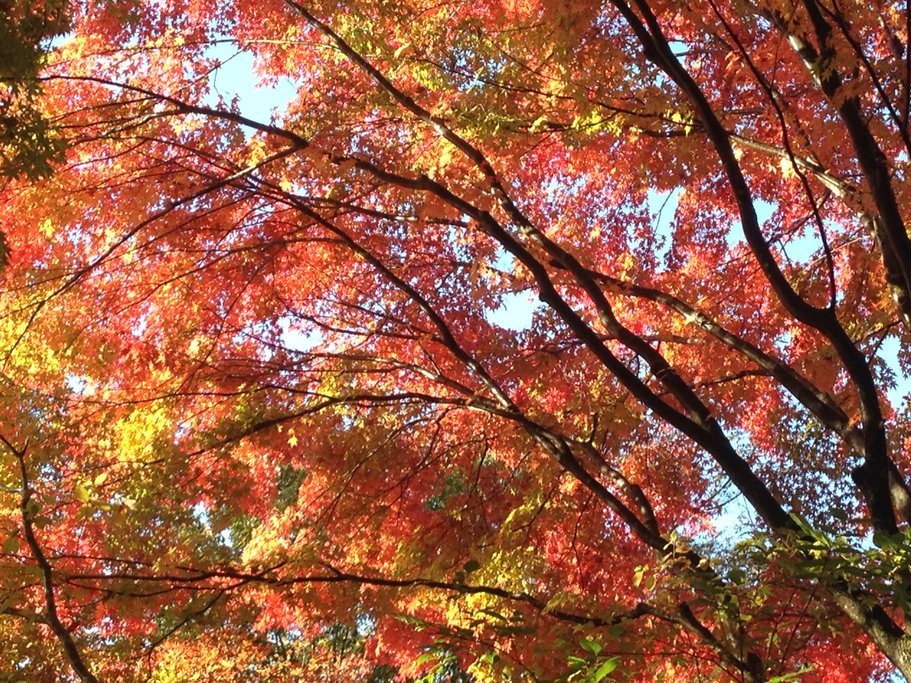
Autumn colors in Shoyo-en, Nikko, creating a stunning landscape of reds, oranges, and yellows (© Yuri Awanohara).
Autumn is widely regarded as the best time to visit Japan, offering long daylight hours and sunny, cool days. The vibrant foliage creates a picturesque landscape that is truly breathtaking. Autumn is typically less crowded than the peak cherry blossom season, and the brilliant colors persist for several weeks, allowing ample opportunity to enjoy the scenery.
Hokkaido / Northern Honshu. Autumn colors reach their peak in mid to late October, with average temperatures in Sapporo around 53°F (12°C). Many establishments in eastern Hokkaido begin to close for the winter season by late November.
Central Honshu. Peak foliage viewing typically occurs in mid to late November, or slightly earlier in mountainous regions. Daytime temperatures in Tokyo and Kyoto average around 64°F (18°C).
Western Honshu / Shikoku / Kyushu. The changing colors usually occur in late November or early December. Average temperatures in Fukuoka are around 75°F (24°C).
Okinawa. Autumn is an excellent choice for visiting Okinawa, offering perfect weather for both above and underwater activities. Average temperatures in Naha during January are around 80°F (27°C).
Key Considerations for Your Trip to Japan
Depending on your specific interests, preferences regarding crowds, and desired activities, you can discover the perfect time to plan your trip to Japan. It is crucial to remember that during peak travel times, such as spring and autumn, many accommodations and transportation options are booked well in advance. Therefore, the earlier you can plan your trip, the better chance you have of securing your preferred arrangements and ensuring a truly memorable experience. Consider the nuances of each season and region, from the snowy landscapes of Hokkaido to the vibrant foliage of Kyoto, to create an itinerary that perfectly suits your travel aspirations.
B-1459

